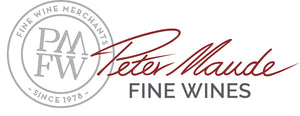
Regions Map

Located in northeast of France, Alsace is something of a hidden treasure, known for its very aromatic, floral and spicy white wines – and it’s white wines that make up over 90% of the region’s production.
The region has a unique heritage, as it has changed hands between France and Germany on several occasions throughout history. The wines are heavily influenced by their German neighbours, and even the bottles share the same fluted shape.
Alsace benefits from a semi-continental climate, which is mostly sunny, hot and dry. Situated in the foothills of the Vosges mountains, the vineyards are located in a rain shadow and are well exposed to the sun, which suits the slow ripening grape varieties grown here.
The key grape varieties include Riesling, Sylvaner, Gewurtztraminer and Pinot Gris.
Source: decanter.com
Chablis and the surrounding region produce great dry mineral white wines, which enjoy international acclaim. Located in the terroir of the Grand Auxerrois, it is home to a wide variety of appellations. Mid-way between Beaune and Paris, the Chablis winegrowing region stretches over around 20 communes. Nestled among the valleys and wooded hilltops, the vineyards cover the hillsides running alongside the pretty Serein Valley. The vines sink their roots deep into the clay-limestone soil, drawing on them for their characteristic mineral aromas, luckily for us.
Here, Chardonnay reigns supreme. It is used for all Chablis wines and has made them famous around the world. The most highly prized among them is Chablis Grand Cru, with its green-gold color and perfect balance between liveliness, dryness and acidity.
You will also appreciate Chablis Premier Cru wines. This appellation encompasses a wide range of aromas from the most mineral to the most floral.
Chablis wines are very dry, and stand out with their freshness and sophistication.
Petit Chablis are wines rich in aromas of white blossom and citrus and are light and lively.
Source: Bourgogne-wines.com
Champagne only comes from Champagne.
Defined by a law dating from 1927, the area eligible to produce origin-approved (AOC) authentic champagne covers 34,000 hectares. The vineyards are divided into four large regions: Montagne de Reims, Vallée de la Marne, Côte des Blancs and the Côte des Bar. Together they comprise nearly 278,000 individual pieces of land, whose average surface area is two hectares.
Source: www.visitfrenchwine.com


